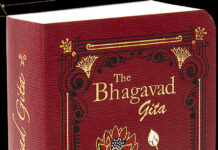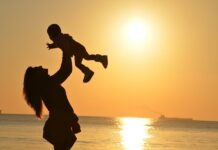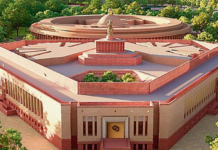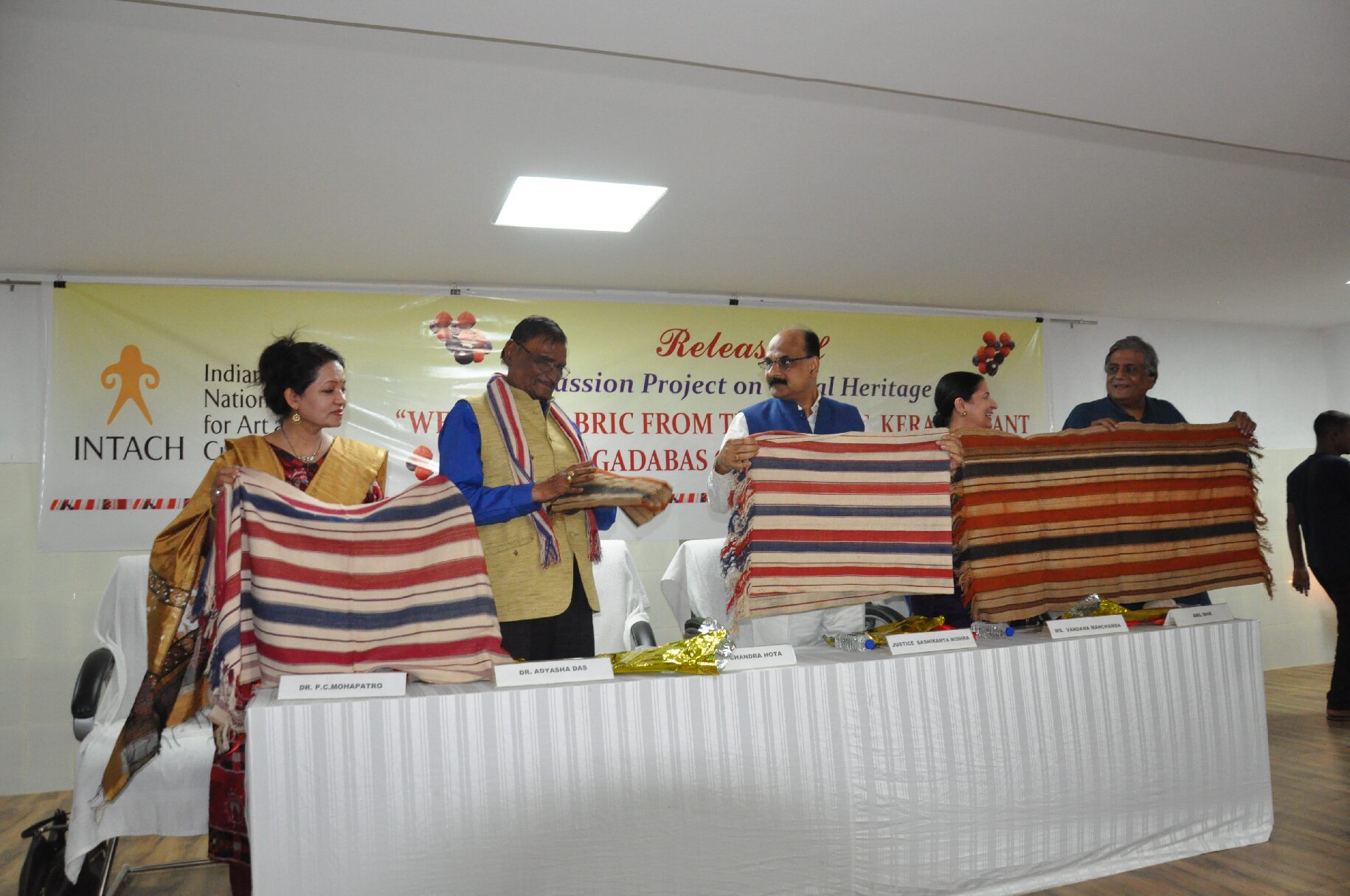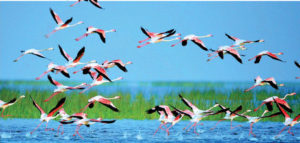Nalban Island forms the core of Chilika due to its varied flora and fauna. With the arrival of evening, Nalban Island hum with the sound of birds. The flapping sound of a bird’s wing is multiplied by thousands. Then it becomes a gushing sound. And as hundreds of such gushing sounds mingle, a sound equal to the roaring of a sea in a storm is thus created. The birds are very active in the early morning hours.
Chilika, the largest brackish water lake of Asia is situated between latitude 190 28’ and 190 54’ north and longitudes 850 06’ and 850 35’ east along the east-coast of India. It covers an area of 906 sq kilometers in the summer season and extends up to 1165 sq kilometers in the rainy season. But if we estimate the total water-shed area, it will be 3,000 sq kilometers. The lake is communicated with the Bay of Bengal by an outer channel through Magar Muhan at Arakhakuda. The marginally concave sea-land interface underwent crystal fault and it got subsided and flooded by the sea, forming a bay. A sandy barrier started building from Patur zone as a result of interplay of sands. Then the water body of Chilika had formed. On the basis of existing topography and geomorphology in and around the Chilika lake, calculations were made to find out the age of this nature’s gift. As per these calculations, this lake was a part of the Bay of Bengal five thousand years ago. From the pages of the glorious history of Odisha, Chilika served as Odisha’s window to the rest of the world. It was being used as a part by the sea-going vessels known as ‘Boita’. It was a great centre of maritime activities for the people of Odisha. The Sadhavas (traders) used to travel to the South-East Asian countries viz., Java, Sumatra, Bali, Borneo, Ceylon (now Srilanka), Burma (now Myanmar) etc. from Chilika. In ‘Brahmanda Puran’ (10th century A.D.), Chilika was described as an important centre of trade and commerce. In 318 A.D., a strange race had come to ransack Puri under the leadership of Raktabahu, the pirate-king. They had the intention of looting the Shree Jagannath Temple with its stores of jewels and costly oblations. By apprehending the danger before hand, the sea warned the citizens. The priests shifted the idols of the deities with the jewels and oblations. In Hunter’s historical report, Raktabahu had attacked the temple for three times with the help of Afghan soldiers and dacoits of the ocean. In sheer desperation and anger, he ordered the soldiers, and the dacoits to punish the ocean. Then the ocean receded dutifully for a couple of miles and then suddenly surging upon drowned them. In this process, the ocean flooded a great part of the Puri district and then the Chilika lake was formed. In “Sketch of the Geology of Orissa”, Blanford described that the lake is a part of the sea and had been created by the deposition of silt from the mouth of the river Mahanadi.Forming an essential cultural component of Odisha, Chilika was one of the nature’s excellent gifts. Like Kashmir, Chilika is also a paradise on earth. Chilika is for all. It is for the poet, lover,environmentalist, bird watcher, researcher, scientist, student, teacher and the general tourist.The nomenclature of this lake didn’t have any particular base. Various interpretations were made about this. Some says the lake is named after chila birds, those are plentily available in the lake. Some other say the nomenclature is named after a fish chili. From Hiuen Tsang’s (7thcentury AD) reference to Cheli-ta-lo; there is the assumption that the name might be derived from this.
Apart from the tourist interests like Kalijai, Narayani, Nirmal Jhar, INS-Chilika, Parikuda,
Maluda, Barkul, Nalban , Honeymoon Island, Breakfast Island, Satpada the lake contains a
variety of wild life, plant species and animal species. The state Govt. had declared Nalban as a bird sanctuary in 1979. During the winter season, more than 160 species of birds; bothIndigenous and migratory are found in this 15.53 sq km area. With the change of season from the mist to the winter, the lake turns into a plumed delight from a mute wetland world famous for migratory birds, the lake welcomes the migratory birds in the first half of the March and in the later half of the October. And the exotic birds came in millions. Nalban island forms the core of Chilika due to its varied flora and fauna. With the arrival of evening, Nalban island hum with the sound of birds. The flapping sound of a bird’s wing is multiplied by thousands. Then it becomes a gushing sound. And as hundreds of such gushing sounds mingle, a sound equal to the roaring of a sea in a storm is thus created. The birds are very active in the early morning hours.Containing a large variety of fish, prawns, crabs, oysters this lagoon provides livelihood to thousands of fisher folks’ families. About 30 thousand fishermen engage themselves in the lake through out the year, that means lakhs of people directly and indirectly depend on it for their livelihood. There are 158 varieties of fishes found here. The lake is divided into 289 fishingzones and there fishing zones are divided into five categories, Chingudi Khatti, Uthajala, Jana, Bahana, Dian. The first two are prawn areas and the other three areas are fishing areas. The crabs found here are of distinct quality, of large size, blackish in colour and much more delicious than the marine crabs. Crabs like Scyla serrata & Neptunus pelagious are the predominant types. One eighth of the total fish product of Odisha is estimated to be from the Chilika.
The thrilling sight of Dolphins round the year can only be seen at Satpada – a preferred place for a vacation with nature. It is another retreat in nature on Chilika lake. At present there are 110 Irrawaddy Dolphins in the Chilika lake. Dolphin population in the lake may not survive another decade as the Environmentalists are pointing out. This species of Dolphin population has a very low birth rate, with female Dolphins producing only one calf in three years. Therefore it is very necessary that the Govt. must enforce the Orissa Marine Fisheries Regulation Act, 1988 stringently.The various places of interest in the lake are Kalijai, Barkul, Ranbha, Parikud & Malud,Brahmapur etc. Kalijai is situated on a small hill, half merged under the water. A temple was constructed on the top of the hill by the king Jagannath Mansingh in 1124 AD. But in the passing time, the temple was destroyed. Then in 1882 AD, King Gaurchanda Mansingh rebuilt the temple. Here Goddess Kalijai is worshipped by the devotees with great respect.
*Samarendra Baliarsingh









